And every thing’s beautiful in its own way. Of all of our planned travels, Myanmar was the most mysteriously interesting to us. The history of the country is a long and storied one. From the Mongols, to the Portuguese, to the British, and to the Japanese, Myanmar, then Burma, only gained independence in 1948. Burma was a parliamentary democracy until 1962 when a military coup established the socialist period until 1988. It was during this time that traveler’s visas were reduced from 30 days to 24 hours, essentially shrinking any tourist economy within Burma.
It wasn’t until 2000 that visa requirements were relaxed and visa validity lengthened. This was strategic on the part of the military government in order to accumulate foreign currency to buy arms and to regain prestige after the thwarted elections of 1990 where the opposition party won by a landslide but the military refused to acknowledge it.
1991’s Nobel Peace laureate, Aung San Suu Kyi, daughter of assassinated former interim leader Aung San, urged tourists to boycott visiting Myanmar arguing that tourism legitimizes the dictatorship, which has been accused of a number of horrifying human rights violations, most recently even genocide. She has since relaxed her view on tourism and now encourages ‘responsible tourism.’
With all of that in mind, we set out to visit this mysterious place that essentially has been closed off to the rest of the world for several decades. Knowing that the first round of elections since the soured ’90 elections were coming up on November 8, we planned our travels around that date.
We had read that getting your visas to Myanmar was complicated, but we found it to be easy using the eVisa online. We filled out the form, uploaded a picture of ourselves, paid the $50 fee via Paypal, and within 12 hours we were approved. Easy as that. The visa is valid for one entry within 90 days.
Yangon (formerly Rangoon and the capital) was our first destination into Myanmar. We flew from Chiang Mai to Bangkok and then into Yangon – I know, not the most logical of flights, but that’s what Air Asia offered. While awaiting to board our plane from Bangkok to Yangon, a kiwi came up to Shiv and asked if he could take a picture with him because he was a deadringer for a friend of his (to which he showed us the picture – and yes, it was true). He snapped the pic and went on his merry way.
Later, as we lined up for boarding, the kiwi (Nick) happened to be right behind us with his girlfriend (Shannon). We got to talking and learned that they were on a similar journey all over Southeast Asia. Exchanging names, recommendations, and contact info, we ended up taking a taxi together into the city with the promise of meeting that night for dinner and drinks.
But allow me to back up a little to when we got off the plane in Yangon. Walking from the arrival terminal into the baggage claim, I found myself doing a double take. Outside of the baggage claim area, there were at least 200 people squished up against each other waiting for friends and family to arrive. Hands and faces pressed on the glass separating the two rooms, they all wore brightly-colored outfits. Their skin tone, similar to Shiv’s (and even some of their features)… it all reminded me of India!
Upon closer inspection, the brightly-colored outfits were a bit different than the salwar kameez or lehengas worn in India. Their outfits, as I would learn later on, are called longyis, essentially a wide tube of leg-length fabric tied to make a fashionable skirt. Worn by both men and women, it’s tied differently for each of the sexes. Women wear it tied on the side and top it off with beautifully tailored blouses (see example here), often in bright and happy prints and solids. Men wear it tied in the front and have solid or plaid prints and they top it off with a collared shirt or singlet (see example here). In much of the same way I love Indian outfits for their use of saturated colors and flattering styles, I also fell in love with the Burmese way of dressing.
When Shiv and I first traveled to India together in February 2015, we had it on good recommendation from several friends to read the book Shantaram. Not only because the book is wonderfully written, but because it gives a huge amount of insight into the culture of India, something that for Westerners can be very overwhelming and, at times, confusing. Shiv and I thought it would be nice to listen to the audio version together to prep. Turns out Shiv has a hard time concentrating on audio books so we never made it past Chapter 3.
Since we are on our second trip to India come December, we actually bought the book and are tag team reading it. While I think I already learned some of those insights into Indian culture in February (yes, it will take at least one week to wedding shop!), there are still many other insights to be learned. Myanmar happens to be right in the middle of India and China, and to be honest, is like 50/50 of each culture. I found myself drawing a lot of parallels between my experience in India and my experience in Myanmar. One of the major themes of the book is that to experience a culture you must surrender yourself to it: Sometimes in India, you have to surrender before you win.
And though we weren’t in India, we found ourselves surrendering ourself to this culture. It would have been really easy for us to dismiss it as a crude city, the pits if you will, based on our first night there. The traffic was so terrible that it took us 45 minutes to go the eleven miles to our guest house well after rush hour. Once we had checked in, we roamed the streets looking for a SIM card. The smell in the city was unbearable for me. Admittedly, I have a strong sniffer which has proven to be both a blessing and a curse. And in Yangon, it was the scourge of my olfactory senses every time we stepped outside. It’s shrimp paste running off the street food vendors’ carts and mixing with the brown sludge found in the gutters of the streets, baking in the hot Yangon sun day after day. It’s the smog and the oil from taxis, it’s the urine and feces of stray dogs and cats, and it’s the pungent body odor of 5 million people. In spite of the heat and humidity, I wore a scarf around my neck to act as a buffer between me and the stench.
The other very unpleasant observation is the ubiquitous use of betel nut, a mixture of betel nuts, lime, and tobacco wrapped up in a betel leaf. You chew it like Indian paan or chewing tobacco, and you spit it out just the same – in huge wads of bright red slobbery spits on the street. The sidewalks, roads, and even the sides of cars are caked in layered betel nut stains, and I often was the near victim of a wad from a nearby spitter. The lips are stained a bright red, as if they just ate a cherry popsicle, but their teeth reveal an uglier side: blackened, haunted house-like mouths of those who are addicted to it (see example).
And all of this before we even got to dinner. This is when I reminded myself: surrender yourself.
Surrender we did (or at least started to), and had a decent dinner with our new friends Nick and Shannon in Yangon’s Chinatown. Myanmar beer proved to be deliciously refreshing and the lively atmosphere reinvigorated our spirits.
The smell of Yangon at night should have been an indication of the eyesore we’d see in broad daylight. Even those with the most vivid of imaginations would have found it difficult to see the beauty of the now crumbling squalor of the former regal British architecture. A black mildew layer stuck to every wall of every building. It’s an OSHA nightmare with uneven sidewalks, dangling electrical wires, and street food vendors with open flames.
It is a city of contrasts. As I mentioned before, the style of dress is neat and tidy, yet the buildings are in a state of shambles. The cars on the streets are older models, yet everyone has a modern mobile phone. The longyis are an old-fashioned way of dressing, yet the young kids had all sorts of modern hairdos, from hipster to emo to punk. Burmese food is quite tasty (one of my favorite restaurants in San Francisco is Burma Superstar after all), yet I couldn’t get myself past that unyielding Yangon city funk.
Shwedagon Pagoda
Based on last night’s terrible traffic, we decided to hoof it to the pagoda. It’s a little over 2 miles from our guest house, but armed with a large water bottle and umbrella (to block the sun, not the rain), we thought we could see some of the other parts of the city along the way, hopeful that there were some other grand parts to be discovered.
Not so, unfortunately. And by the time we arrived near the pagoda area, we were thoroughly drenched in sweat! We ended up nicknaming it the ‘sweaty-gon pagoda’ since we were dripping in sweat. Luckily we found a little, air conditioned mall to rest ourselves for a bit and enjoyed an ice cream snack. Refreshed, we headed towards the pagoda through a little park where there seemed to have been some sort of festival going on. Music, food, and all the young kids hanging out. That should have been our first clue – but it didn’t register with us at the time.
Another thing I should mention here is that, in daylight, we found the staring to be quite noticeable. Normally when we travel, Shiv gets the stares in Europe, and I got the stares in India. But here, in Myanmar, we got the stares at both of us. Did we confuse them? Are big beards and bright red hair that uncommon here? I don’t know the answers, but I do know that curious eyes were upon us everywhere we traveled.
So, we continued along to the gate of the pagoda where we saw massive amounts of people amassing at the top of the stairs to gain entrance. We looked at each other, confused, but headed up anyways. You have to take off your shoes when entering pagodas, and so we did, though the floors were dirty and sticky from the free chai they were handing out in front. Several sets of escalators up to the top, we were stopped by the front desk and were asked to pay an entrance fee of $10USD each. This is a foreigner-only entrance fee (I wonder what tipped the guy off?!) and because Shiv was wearing shorts, we were also asked to buy a longyi for modesty. So, Shiv wore a longyi and I actually thought it suited him quite nicely.
Finally, we were able to see the pagoda. And it is one of the most beautiful things I’ve ever seen.
The sheer size is in and of itself breathtaking, and the golden layers shining in the sun was stunning. It is the oldest pagoda in the world having been built over 2,500 years ago. At the very top, there are over 5,000 diamonds, the largest being 76 carats. At 325 feet tall, we could not get a good glimpse of those jewels but trusted they were there. Surrounding this wonder are miniature pagodas everywhere – like a little pagoda city. Additionally, there are other little temples on the outskirts and each of them houses a Buddha. It’s the most sacred pagoda in all of Mynamar, mostly because it houses 8 of Buddha’s hairs as relics.
We learned the reason for the massive amount of people: it was the Full Moon of Thandingyut (end of Buddhist Lent). During this holiday, Buddhists light up the streets with lights and candles everywhere. It was really beautiful all around. We stayed at the pagoda for the rest of the afternoon and through sunset.
I had mentioned that we were getting a lot of curious stares in Yangon, but in the pagoda Shiv was getting some very perplexed stares. We surmised that people may have thought that his beard denoted him as being a Muslim, which would make it strange to see him in a pagoda celebrating a Buddhist holiday, wouldn’t it? Though mostly Buddhist, Myanmar is actually religiously diverse – with Catholics, Hindus, and Muslims, the latter being a currently sensitive topic. We would just smile back to ease any confusion. A guy even handed Shiv his baby and snapped a picture with him!
The setting sun made the pagoda shimmer. We had spent several hours there and were engulfed with its serenity, even with the huge crowds. On the walk home, as I was comparing and contrasting the grit of Yangon to the beauty of the Shwedagon, I concluded that part of the charm of Yangon is exactly those contrasts: you can’t appreciate one without the other.
Our friendly host at our guest house, 15th Street Yangon, arranged a VIP overnight bus for us to take up to Inle Lake. The hospitality in Myanmar, as we would soon appreciate, is one of the best we’ve come across.


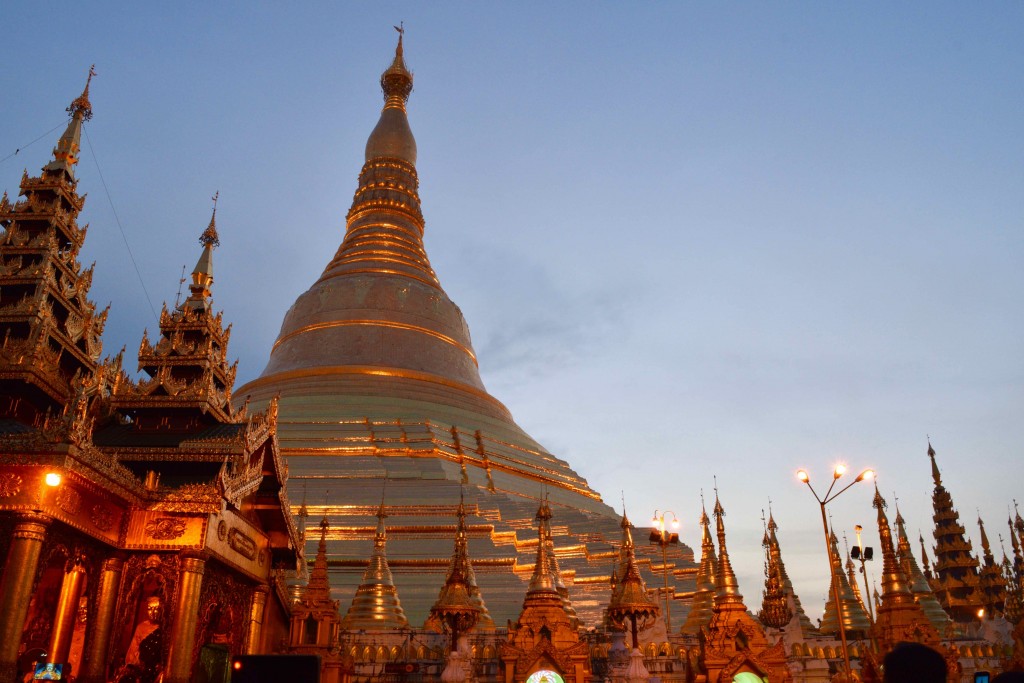
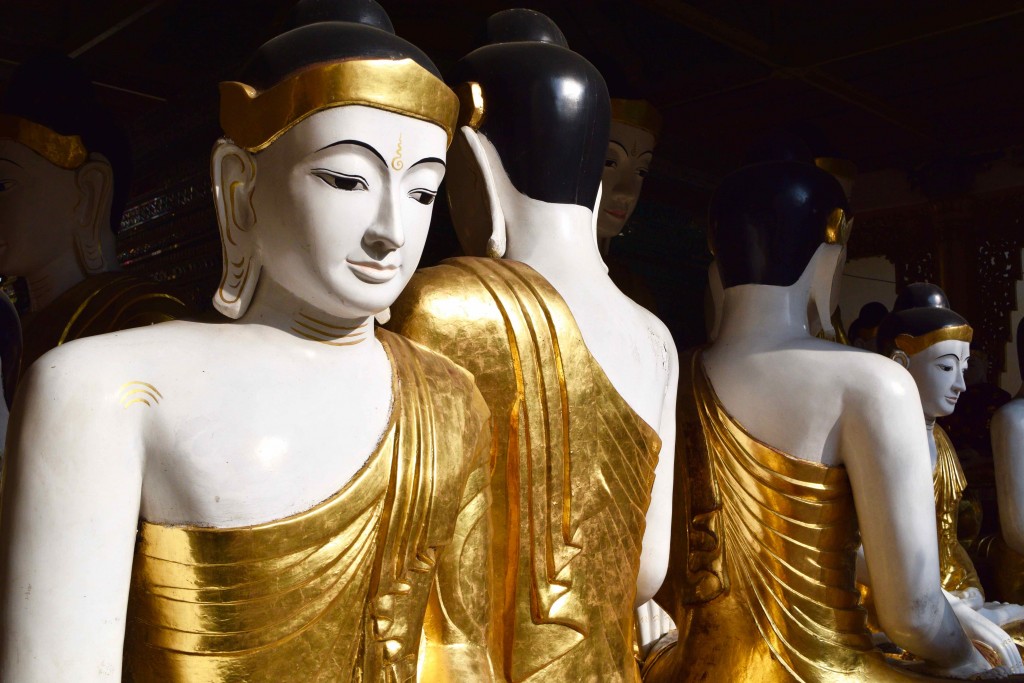
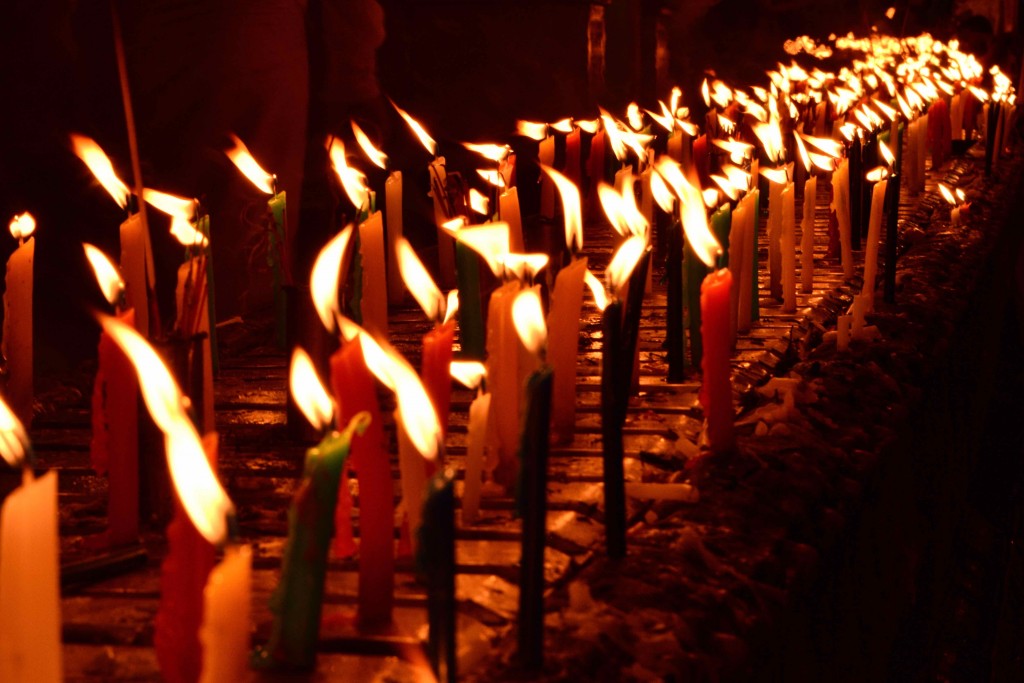
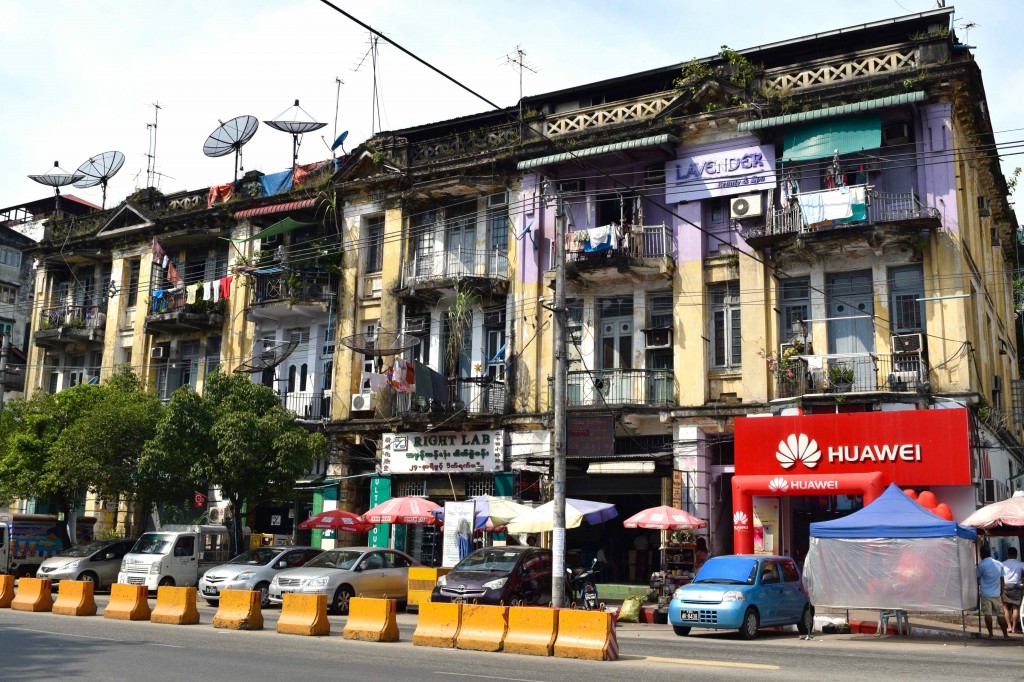

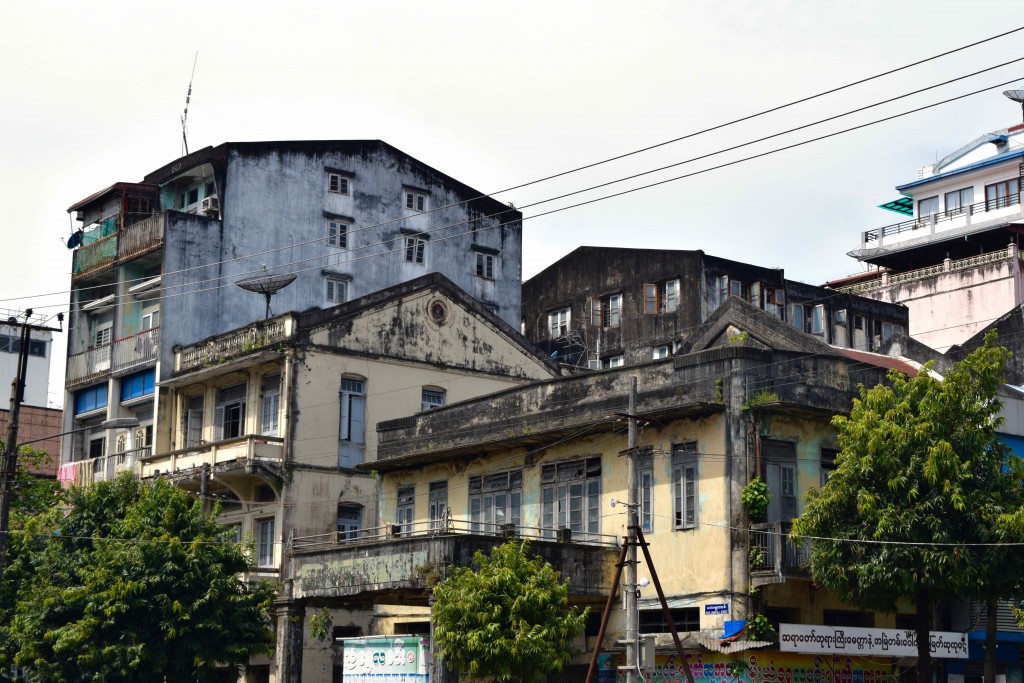
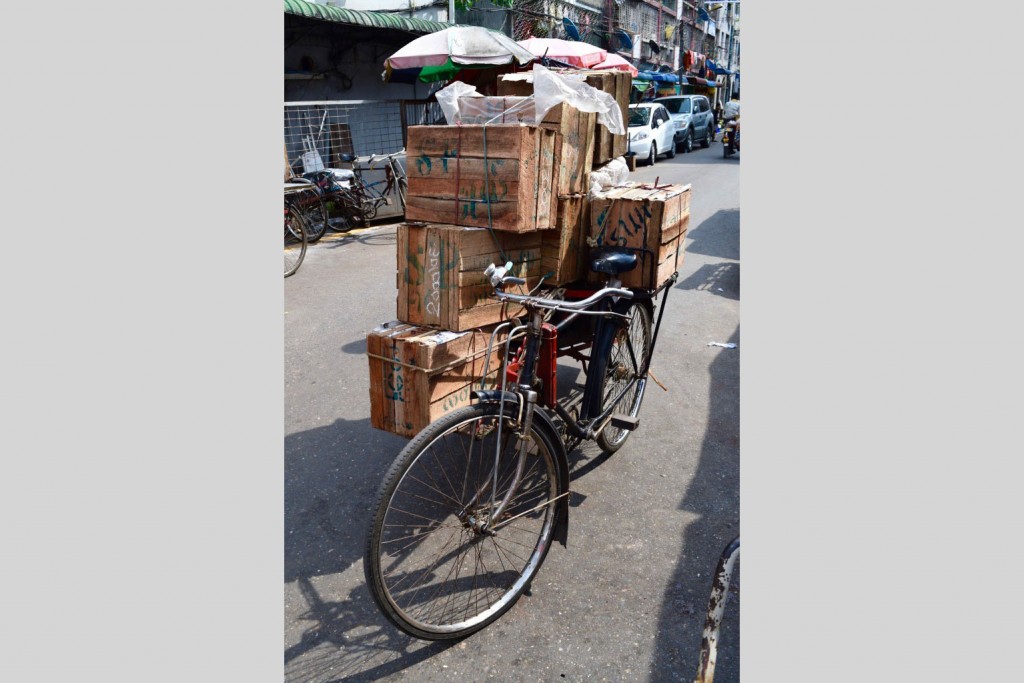
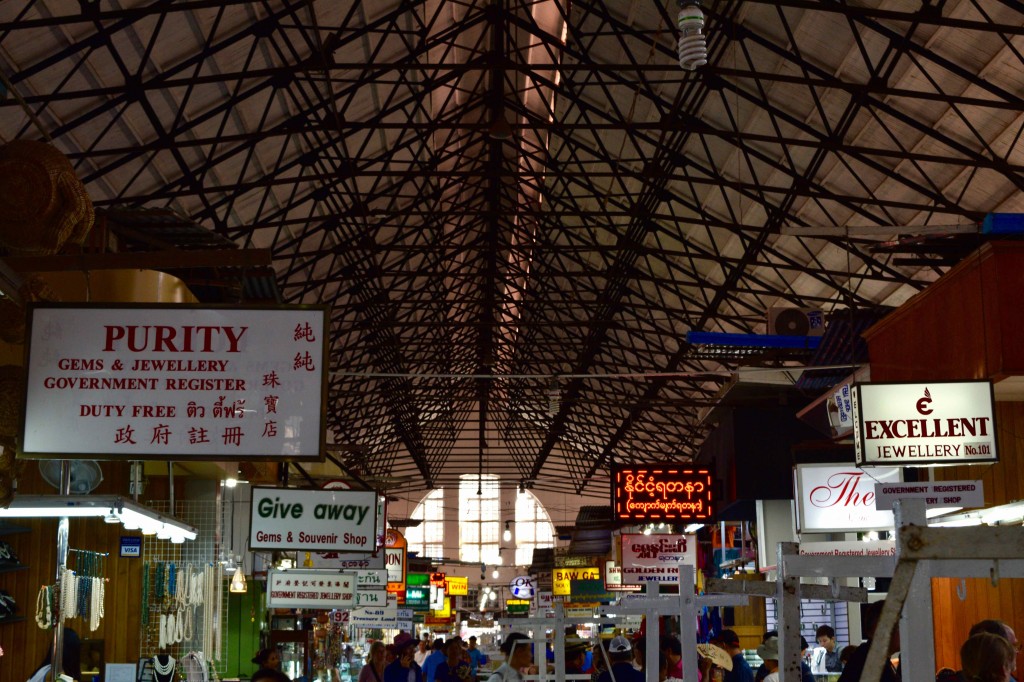
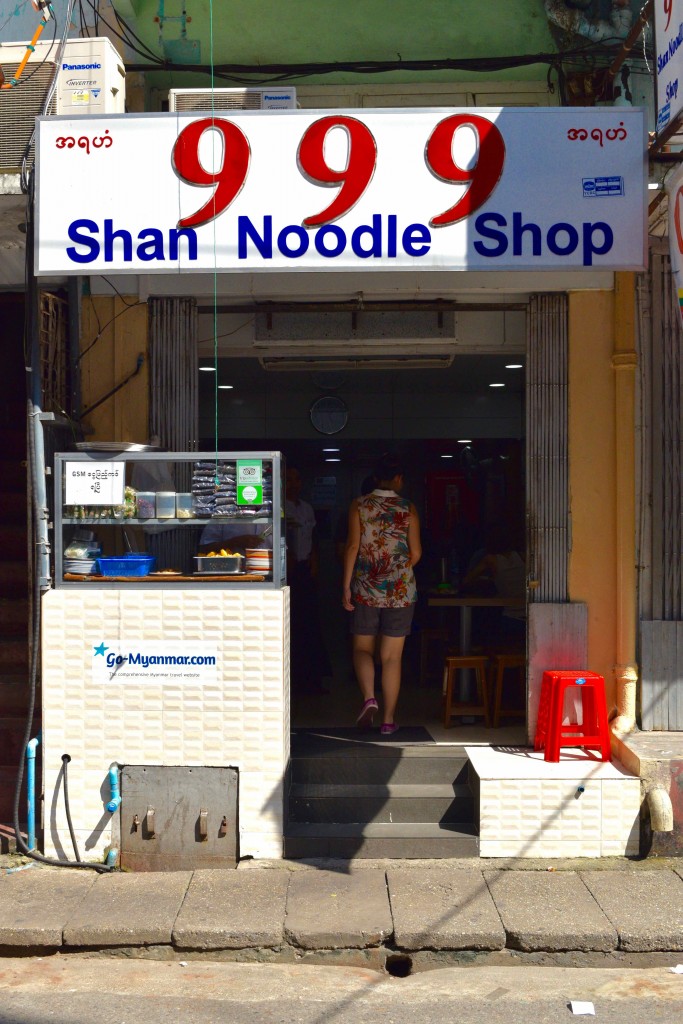
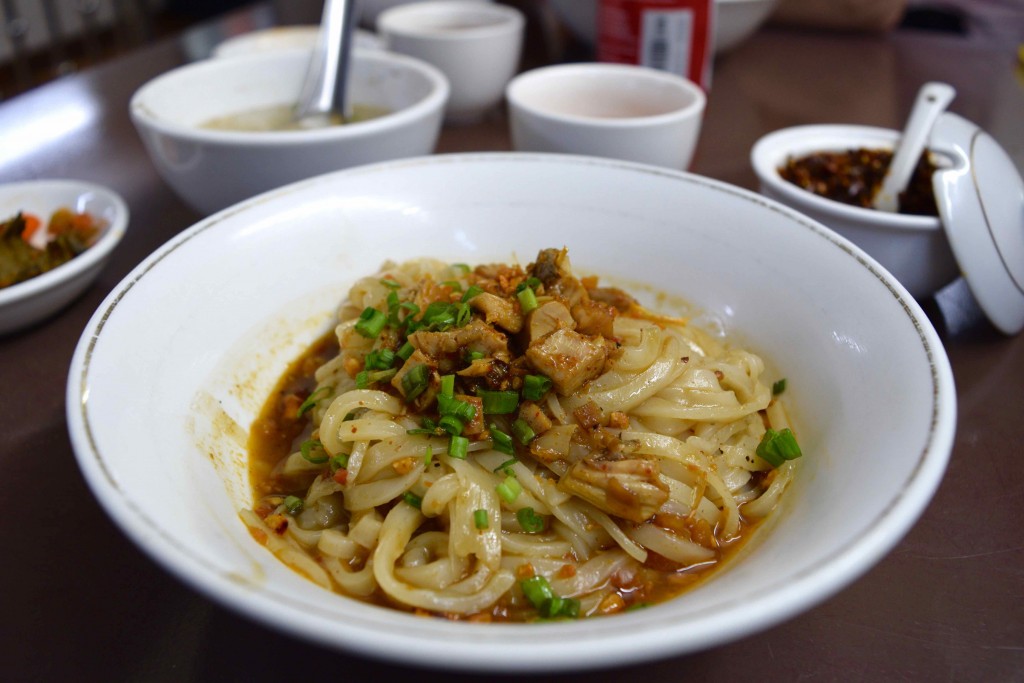
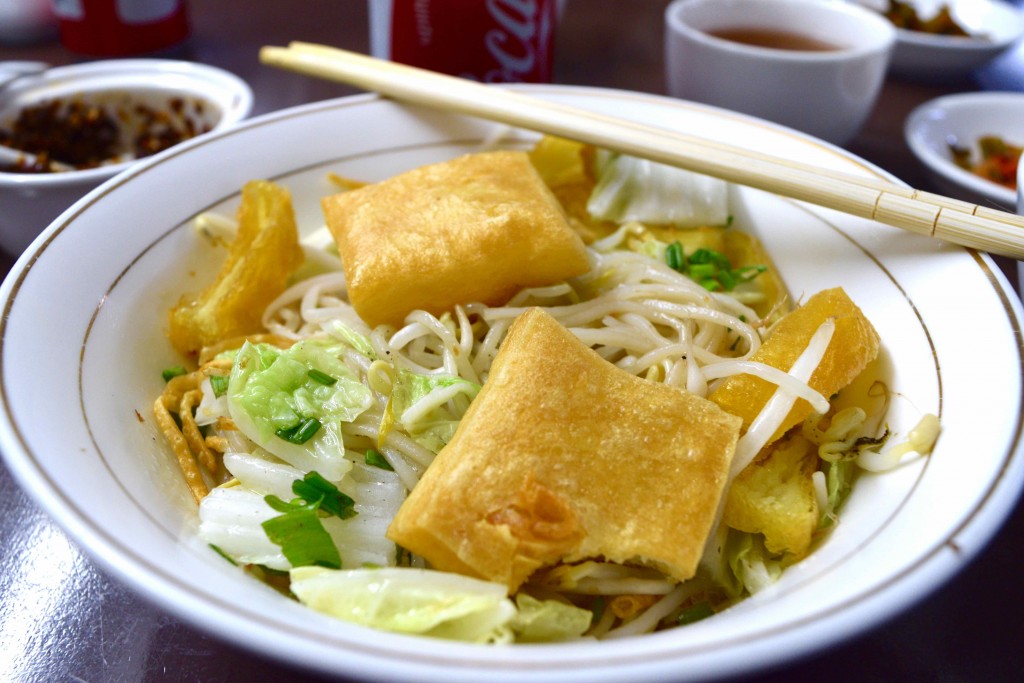
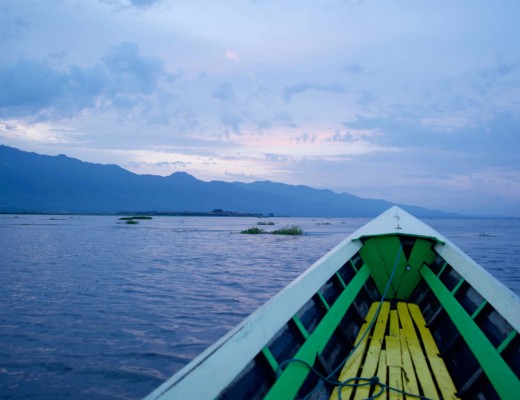

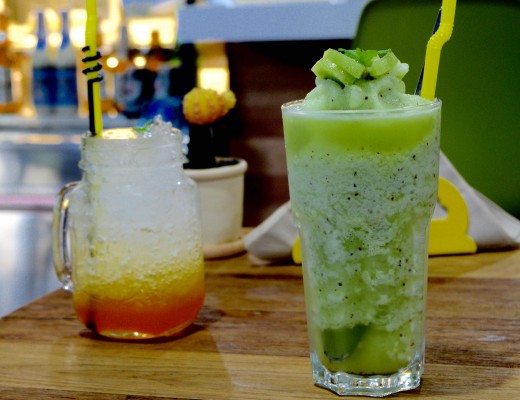
2 Comments
[…] it had to be the smelliest of all places on the face of this earth. I dry heaved several times. Yangon had nothing on this noisomeness! All I kept thinking was that there had to be a pile of decomposing […]
[…] a grand golden stupa and a pretty cool jade Buddha statue. But honestly, nothing compares to the Shwedagon pagoda in Yangon. It was also very crowded with tourists, so we didn’t stay too long. Just enough time to […]